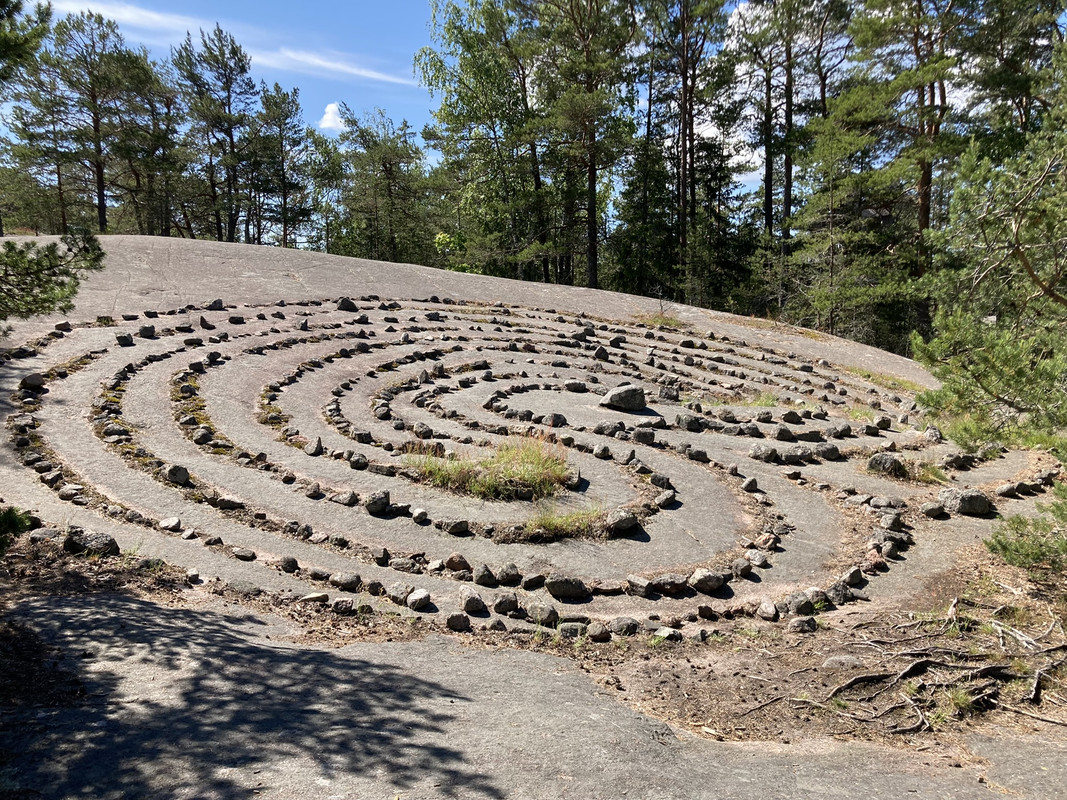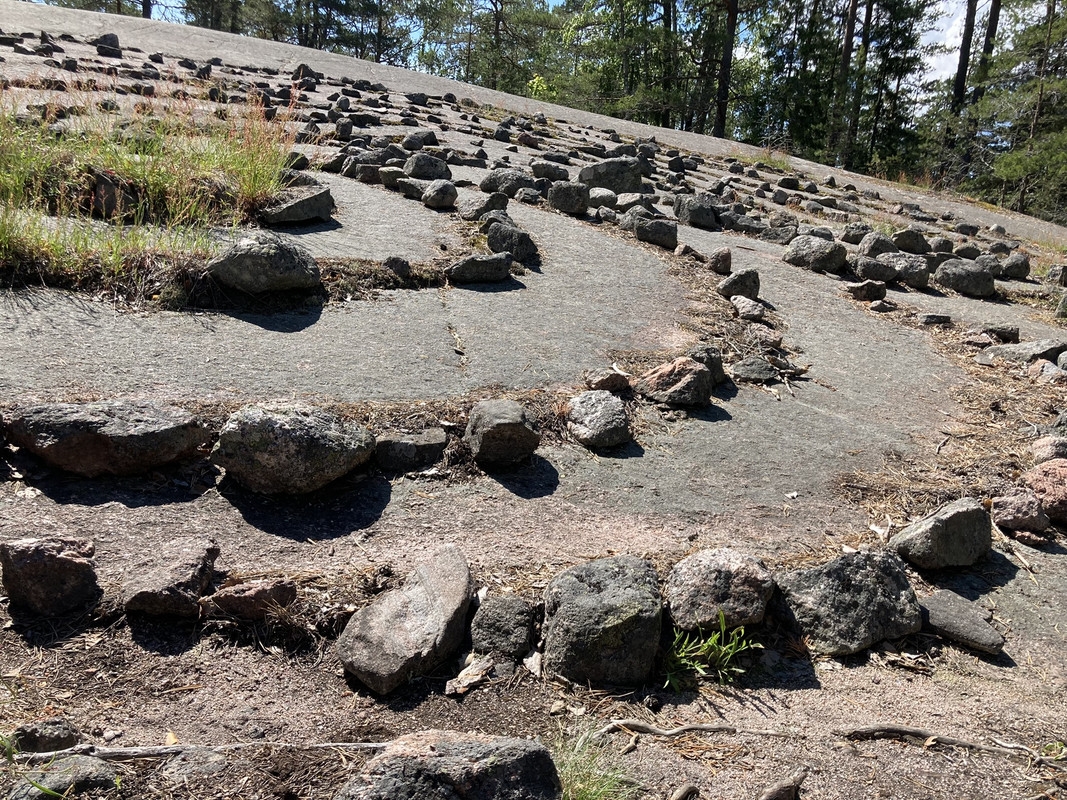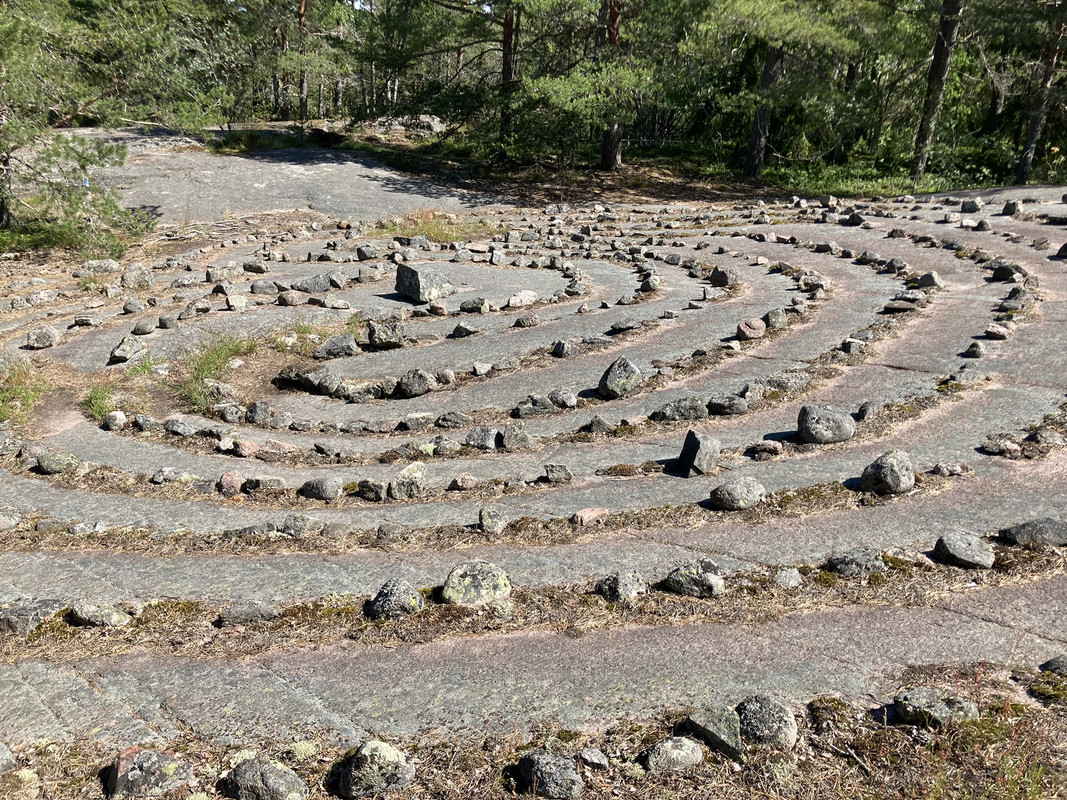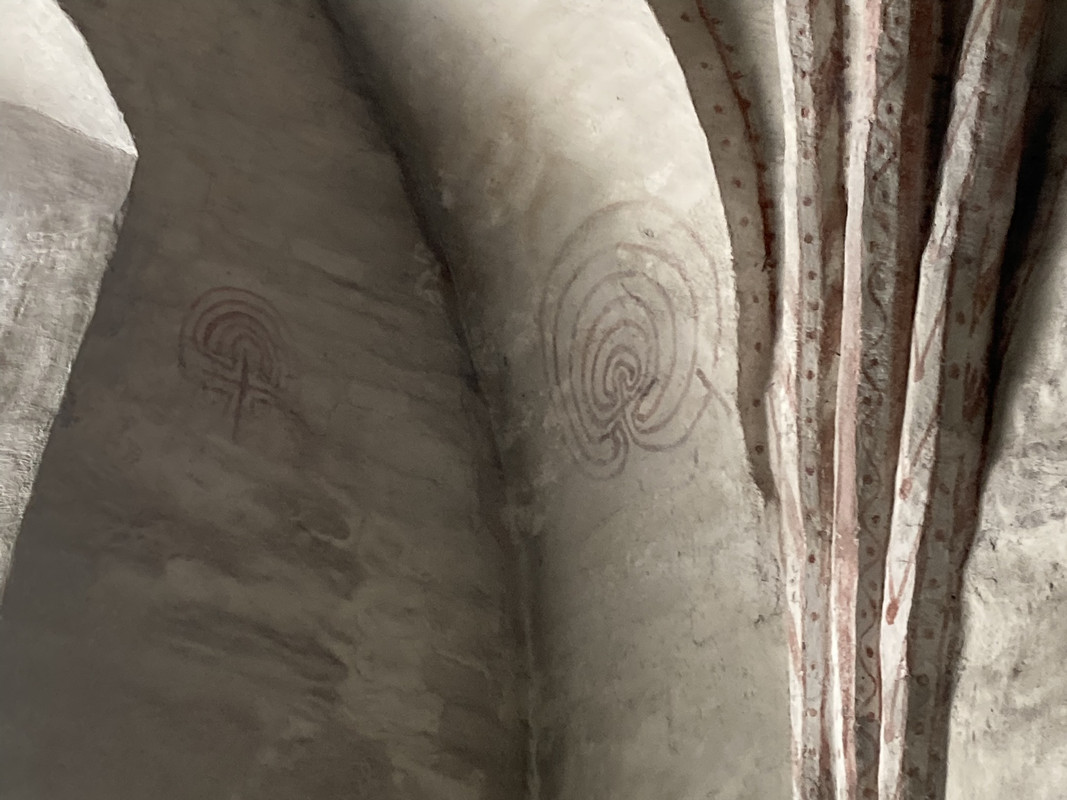I will contribute some ancient / folklore stuff. I have no knowledge whether these particular sites relate to Midsummer or the Solstice, but in this case I refer to the fact that we went to the site on the Solstice day

So, here’s an ancient Baltic mystery for you:

This place is a
jatulintarha or
jungfrudans in Nagu (Finnish: Nauvo) in the Finnish archipelago. Hundreds of these mysterious sites remain in Finland and Scandinavia, and some are known elsewhere in Northern Europe and the Kola Peninsula and White Sea area. The ones that have been aged in Finland were built in 1300’s onwards, but some have been suggested to be prehistoric. There are around 200 of them known in Finland alone, all on the Baltic coast and almost all are on islands. Similarly the ones in Sweden and the about 20 that are known in Norway are coastal. Who built them? For what purpose? We don’t know. They have been studied and several Doctoral theses have been written, but no consensus has been reached.
In Finland suggested purposes include ceremonial or magical use, navigation markings (I don’t think the Nagu one is visible to the sea even if the trees were cleared) or simply as a way to pass time. Suggested magical uses could be good luck charms or a way to bind malicious spirits, and fertility magic (it’s always fertility magic, isn’t it?). The Finnish name jatulintarha means “giant’s garden” or “giant’s corral” which might relate to the spirits explanation, however there are also other stone remains that are called work of giants, so it doesn’t necessarily refer to any use.
The Fenno-Swedish name jungfrudans means “maiden’s dance” or “maiden dance”. It’s been speculated that young women and men would dance in the labyrinth, with the objective for the young man to lead the maiden out of the labyrinth. Again, just passtime? Courtship ritual? Fertility magic? We don’t know.
They are constructed by laying of stones to form the pattern, and the path is between the rings of stones.

These are not mazes in the sense that there are no dead ends. It’s just one path circling into the center. The center in the one I visited is marked with a little larger stone.

Most of them have this kidney shape and 7 rings, but variations are known. Some are simple spirals, those tend to be the newest ones built in the 1800’s or even 1900’s. They are usually about 10 m across but vary from a few meters to about 20. The Nagu one is 14 m wide.
While their significance is not known, the pattern must have been important because from 1400’s, pictures of them were painted on the walls of churches along with lots of other stuff. This photo is from the church of Korpo, the island community (previously municipality) neighboring Nagu.

We visited the church on the same day so I was delighted to see these. Interestingly, again it is not known why these and other paintings were done in the churches. Many of the paintings are outright weird, I’ll add a few more pictures under cut at the end.
The pattern resembles the Troy Towns known in the UK, but the UK labyrinths were cut in turf rather than built by laying of stones. Only three remain there, but several others have been recorded before they were lost. Their timeline is not known either, the turf needs to be recut which results in losing the hints to original age. The Wikipedia article on Troy Towns mentions that there have been turf cut labyrinths in Denmark as well, so maybe there is a relation?
The pattern items is well known from many cultures. One more interesting site I have visited is the Rocky Valley near Tintagel in Cornwall. There are carvings on a vertical rock face, of unknown age and purpose. And a familiar pattern:

In what little I have learned about the Rocky Valley carvings, no mention was made to Troy Towns or their Nordic counterparts. But who knows?
Edited to add links to articles and more medieval paintings from the Korpo church.
About these in general:
https://en.m.wikipedia.org/wiki/Troy_Townhttps://fi.m.wikipedia.org/wiki/Jatulintarha (Finnish)
http://akp.nba.fi/wiki;jatulintarha (In Finnish)
About the Nagu Jungfrudans:
https://visitparainen.fi/en/uncategorized/the-archipelagos-finest-nature-paths-5-jungfrudansen-nagu/ (Picture with people walking the path to demonstrate size)
https://www.kyppi.fi/palveluikkuna/mjreki/read/asp/r_kohde_det.aspx?KOHDE_ID=533010001 (in Finnish, Antiquities Board description, which also mentions that between 2015 and 2020 checks some stones had been taken away but more had been brought in, so someone keeps fixing it, the paths stay open due to walking).
About the Rocky Valley carvings:
https://www.britainexpress.com/counties/cornwall/ancient/rock-valley-labyrinths.htmHere are some of the weird church paintings a Korpo